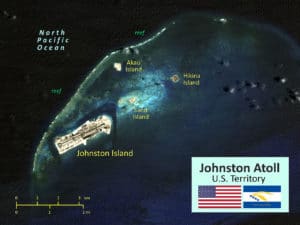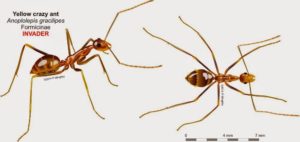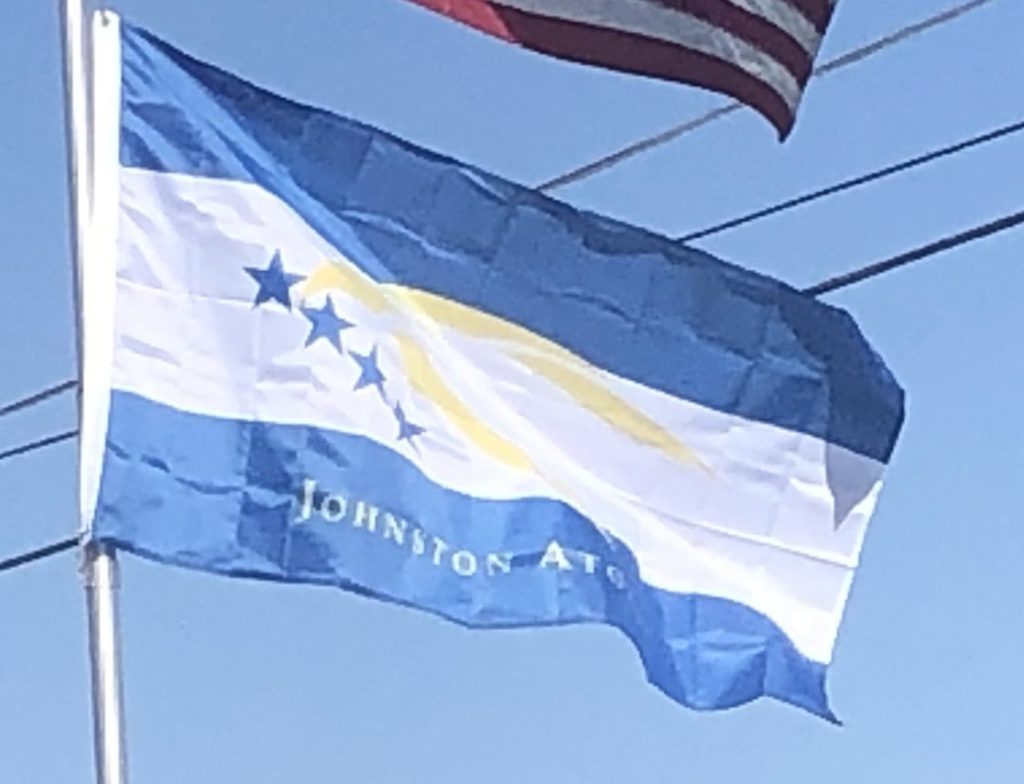On August 22, 2006, Johnston Atoll was struck by Hurricane Ioke. The eastern eye-wall passed directly over the atoll, with winds exceeding 100 mph. Twelve people were on the island when the hurricane struck, part of a crew sent to the island to deliver a USAF contractor who sampled groundwater contamination levels. All 12 survived and one wrote a first-hand account taking shelter from the storm in the JOC building.
On December 9, 2007, the United States Coast Guard swept the runway at Johnston Island of debris and used the runway in the removal and rescue of an ill Taiwanese fisherman to Oahu, Hawaii. The fisherman was transferred from the Taiwanese fishing vessel Sheng Yi Tsai No. 166 to the Coast Guard buoy tender Kukui on December 6, 2007. The fisherman was transported to the island, and then picked up by a Coast Guard HC-130 Hercules rescue plane from Kodiak, Alaska.
Since the base was closed, the atoll has been visited by many vessels crossing the Pacific, as the deserted atoll has a strong lure due to the activities once performed there. Visitors have blogged about stopping there during a trip, or have posted photos of their visits.

On January 6, 2009, under authority of section 2 of the Antiquities Act, The Pacific Remote Islands Marine National Monument was established by President George W. Bush to administer and protect Johnston Island along with six other Pacific islands. The national monument includes Johnston Atoll National Wildlife Refuge within its boundaries and contains 696 acres of land and over 800,000 acres of water area. The Administration of Barack Obama in 2014 extended the protected area to encompass the entire Exclusive Economic Zone, by banning all commercial fishing activities. Under a review of all national monuments extended since 1996 Secretary of the Interior Ryan Zinke has recommended to permit fishing outside the 12-mile limit.
In 2010, a Fish and Wildlife survey team identified a swarm of Anoplolepis ants that had invaded the island.

The crazy ants are particularly destructive to the native wildlife, and needed to be eradicated. The “Crazy Ant Strike Team” project was led by the U.S. Fish and Wildlife Service, who achieved a 99% reduction in ant numbers by 2013 and who continues to work towards a full eradication of the species from the atoll. The team camped in a bunker that was previously used as a fallout shelter and office.
Demographics:
Johnston Atoll has never had any indigenous inhabitants, although during the late part of the 20th century, there were averages of about 300 American military personnel and 1,000 civilian contractors present at any given time.
Transportation:
The primary means of transportation to this island was the airport which had a paved military runway or alternatively by ship via a pier and ship channel through the atoll’s coral reef system. The islands were wired with 13 outgoing and 10 incoming commercial telephone lines, a 60-channel submarine cable, 22 DSN circuits by satellite, an Autodin with standard remote terminal, a digital telephone switch, the Military Affiliated Radio System (MARS station), a UHF/VHF air-ground radio, and a link to the Pacific Consolidated Telecommunications Network (PCTN) satellite.
